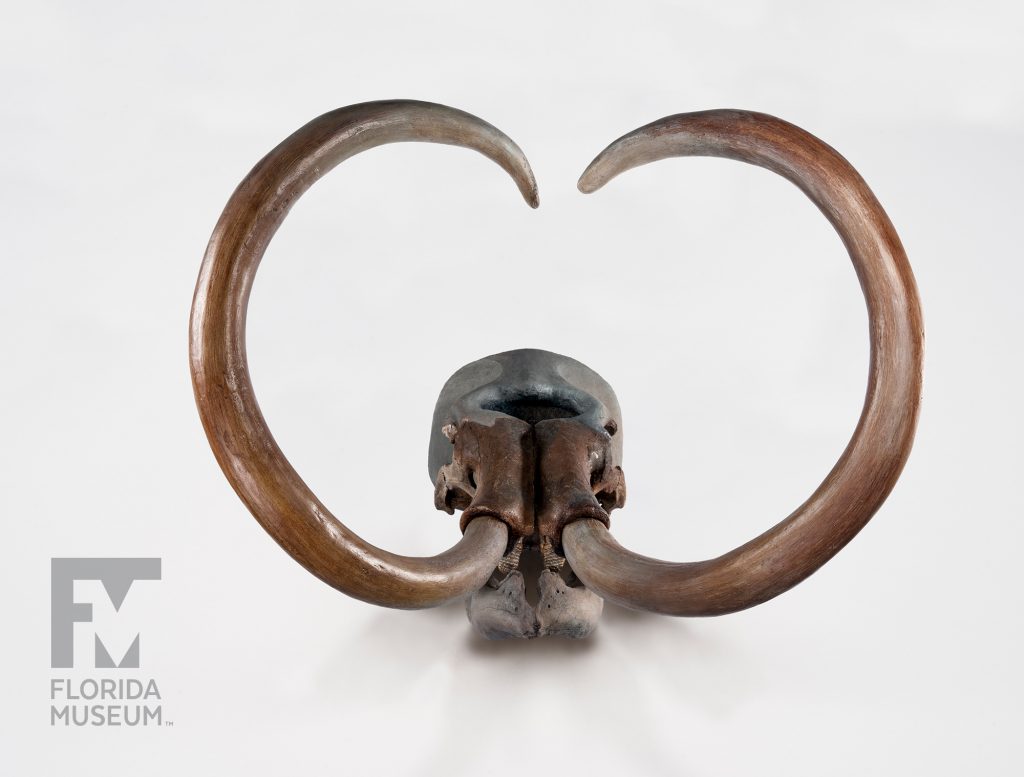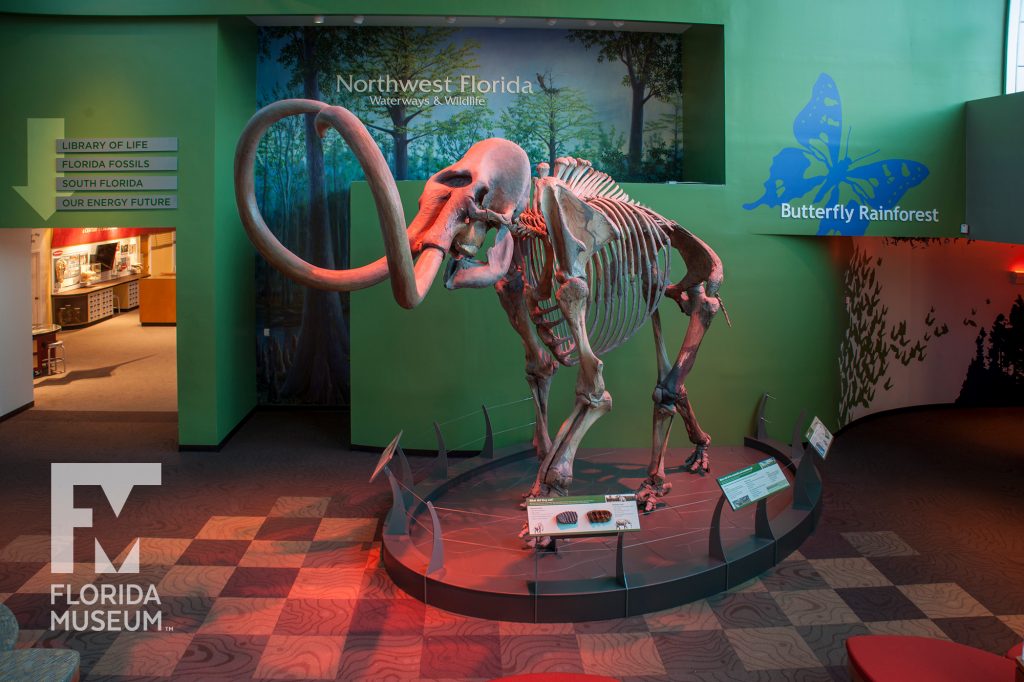This object is on permanent display in the Denny Family Gallery, located in the main Museum lobby.
Summary
Columbian Mammoth (Mammuthus columbi)
From Jefferson Co., Florida
Lived ~16,000-11,000 years ago
Collection
Story
The largest fossil animal on display in the Museum is the mammoth skeleton, technically Mammuthus columbi. It was found submerged on the bottom of the Aucilla River in North Central Florida. In the same deposit, the mastodon skeleton was also found so they were contemporaneous. Mammoths primarily eat grass, where mastodons are primarily eating leaves and other browse. Both of them were facing a new predator: the humans that had just invaded the North American continent and liked to use their bones and tusks for tools.
There are only two known mounted skeletons on public display of mammoths from Florida; the one you see here and the other one is far north of here at Amherst College in Massachusetts.
Richard Hulbert
Collection Manager, Vertebrate Paleontology*
Florida Museum of Natural History
Exhibit
On display Sept. 23, 2017-Jan. 7, 2018, Rare, Beautiful & Fascinating: 100 Years @FloridaMuseum celebrated the Museum’s rich history. Each Museum collection was asked to contribute its most interesting items and share the stories that make them special. Though the physical exhibit is closed, this companion website remains online, providing an opportunity to experience the Florida Museum’s most treasured specimens.
Exhibit Area: Always on Display
 Want to see more? Explore more than 300 breathtaking color photos of plants, animals, fossils and cultural heritage materials from the Florida Museum of Natural History’s collections in the award-winning book All Things Beautiful available from the University Press of Florida.
Want to see more? Explore more than 300 breathtaking color photos of plants, animals, fossils and cultural heritage materials from the Florida Museum of Natural History’s collections in the award-winning book All Things Beautiful available from the University Press of Florida.
*This title was accurate at the time the exhibit was on display in 2017. Please visit the collection website to verify current staff and student information.

